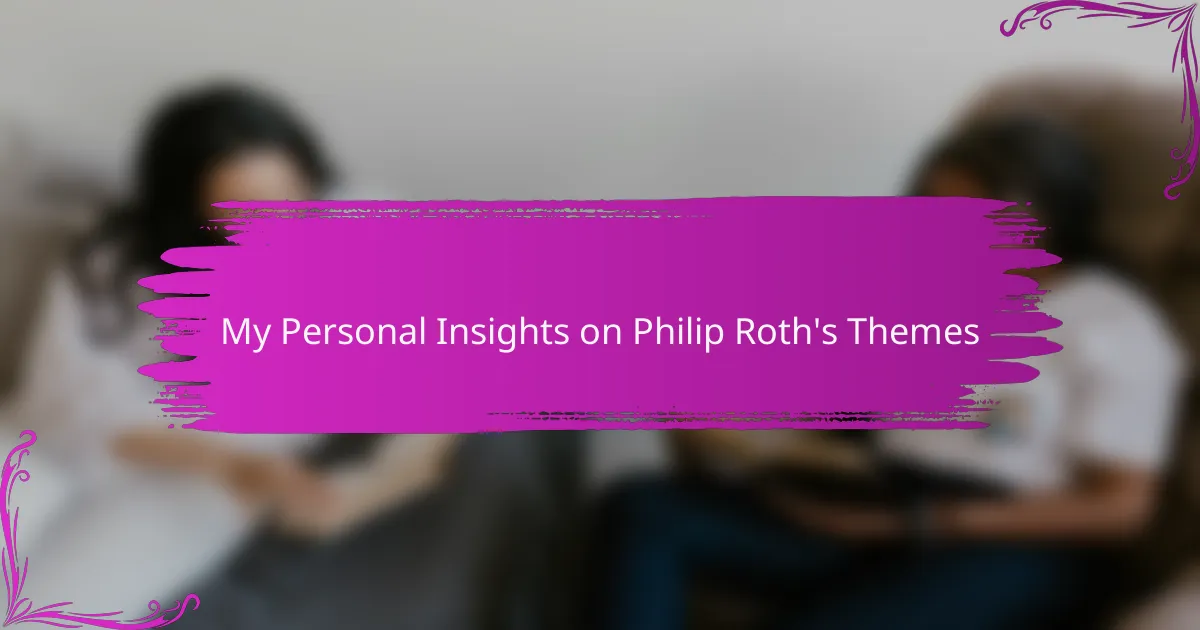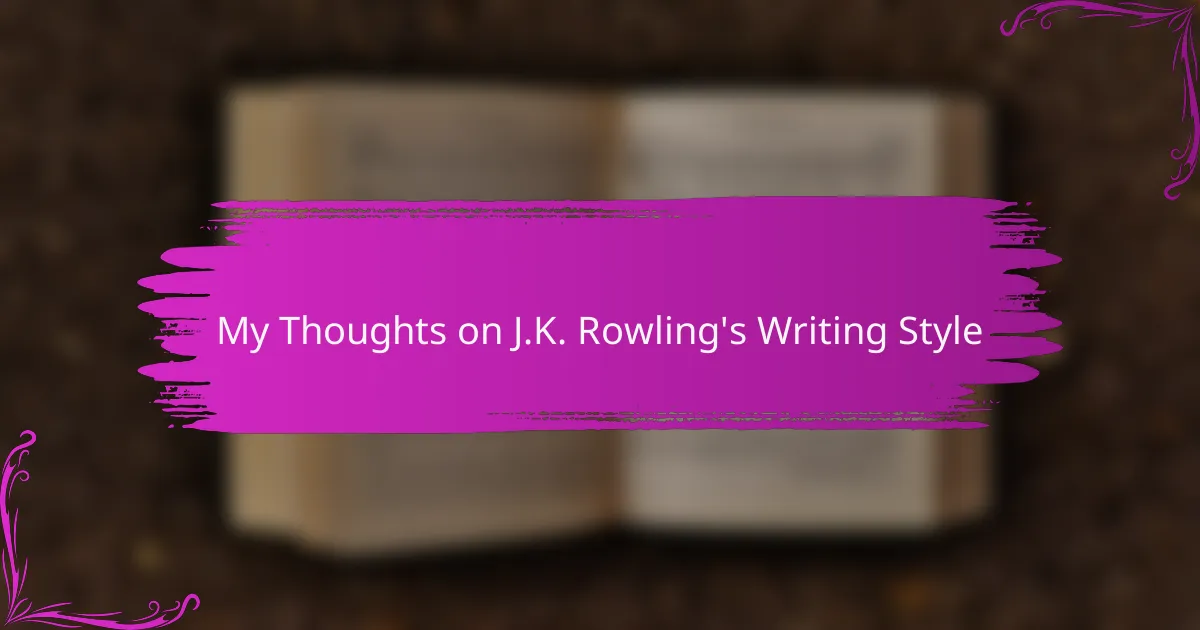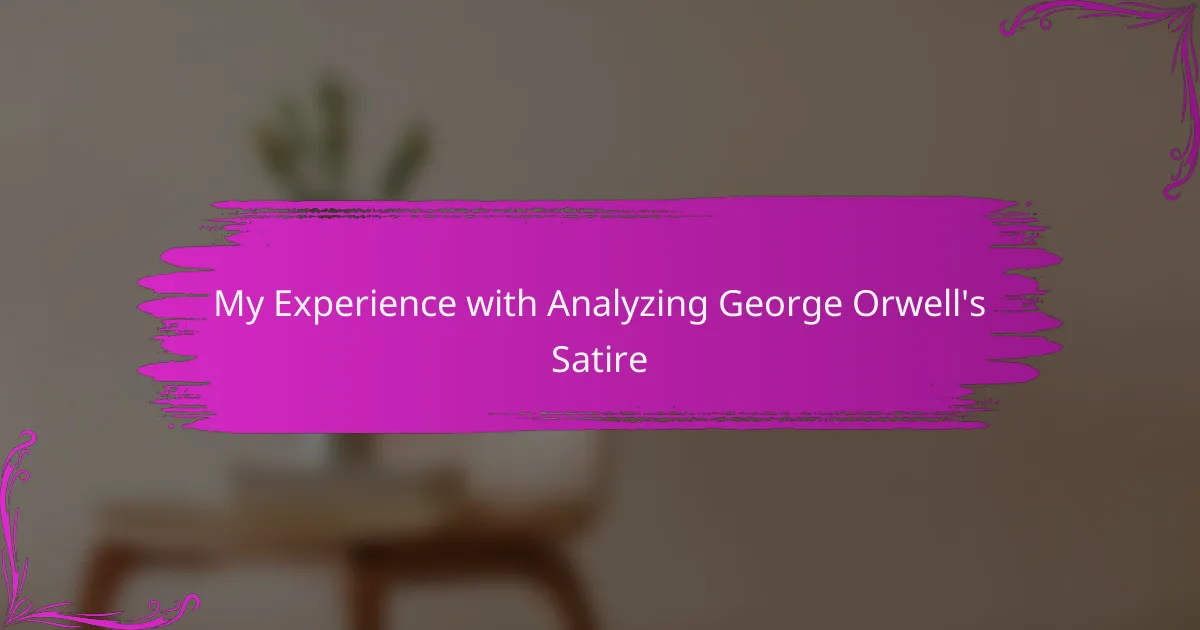Key takeaways
- Philip Roth’s literature deeply explores identity, desire, and the complexities of modern life, often reflecting on the immigrant experience and cultural heritage.
- His works invite readers to confront personal beliefs about mortality and societal expectations, fostering introspection and critical dialogue.
- Roth’s writing style blends humor and serious themes, making complex emotional experiences relatable through his character depth and semi-autobiographical elements.
- Educational resources like scholarly articles and book discussions can enhance understanding of Roth’s themes, enriching readers’ connections to his literature.
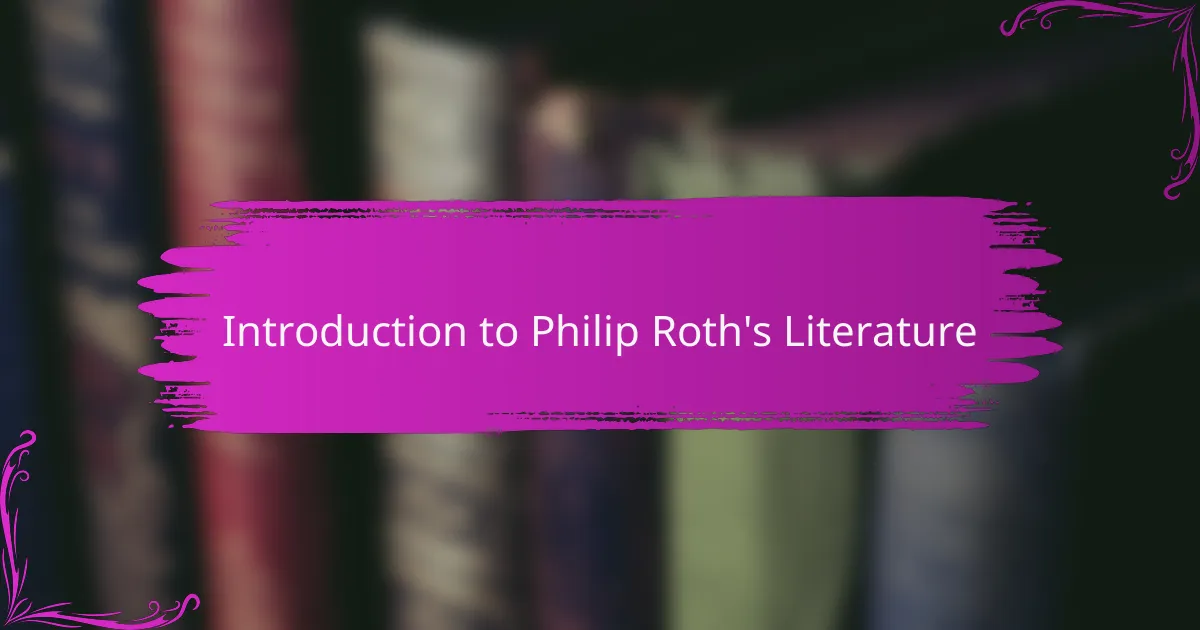
Introduction to Philip Roth’s Literature
Philip Roth’s literature is a compelling exploration of identity, desire, and the complexities of modern life. I remember the first time I picked up “American Pastoral.” It was like peeling back layers of a person’s psyche, revealing both beauty and disarray within the same narrative.
Roth’s ability to intertwine personal experience with broader social commentary draws me in every time. Have you ever felt that a book spoke directly to your own struggles? I certainly did when reading “Portnoy’s Complaint,” which tackles themes like guilt and [censured] frustration with a raw honesty that resonates deeply.
His characters, often flawed and deeply human, make us question our own morals and choices. It’s almost as if Roth holds up a mirror, inviting us to reflect on our lives. In my experience, encountering Roth is about more than just literature; it’s a journey through the intricacies of our existence.
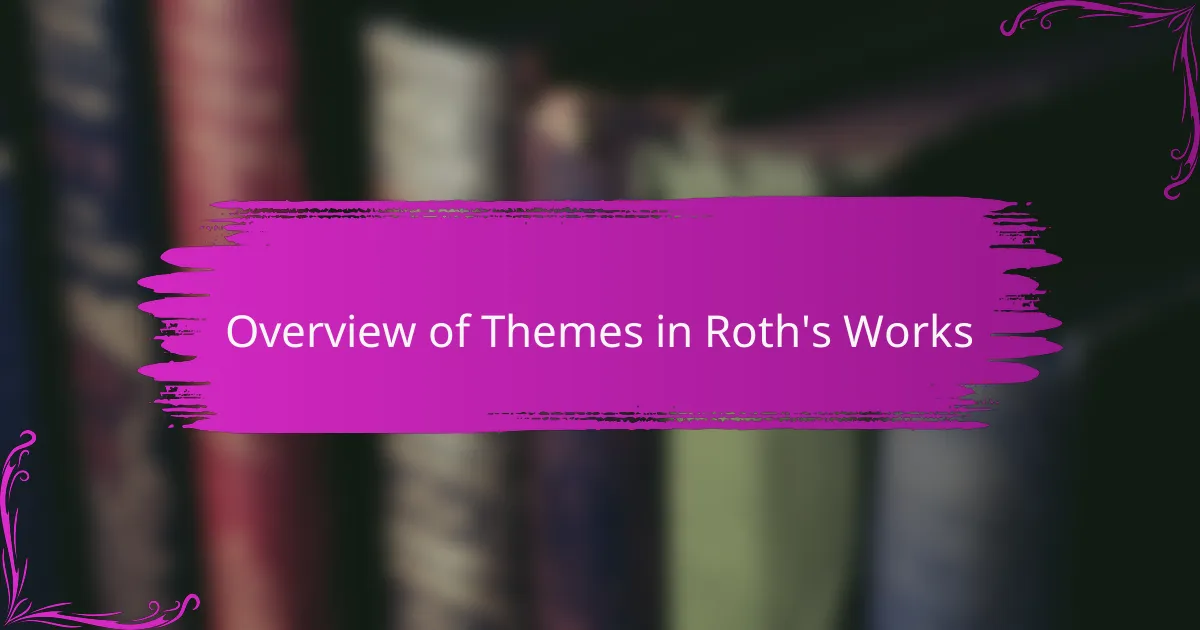
Overview of Themes in Roth’s Works
Roth’s works are rich with themes of identity and the search for self in a rapidly changing world. I recall feeling a visceral connection to his characters, particularly when they grapple with their Jewish heritage and the tension between tradition and modernity. It resonates with the struggle many of us face in balancing our backgrounds with who we aspire to be.
Another recurring theme in Roth’s literature is the exploration of sexuality and the complexities that accompany it. In “The Breast,” I found myself both fascinated and disturbed by the protagonist’s transformation and the absurdity of his circumstances. Isn’t it intriguing how Roth manages to address such intimate topics with both humor and gravity? He delves into the intimate layers of human desire, exposing vulnerabilities that many readers can relate to.
Finally, the theme of mortality looms large throughout Roth’s body of work. In “Everyman,” I was struck by how beautifully he articulates the inevitability of aging and death. The poignant reflections on life’s transience prompted me to question my own views on legacy and what it truly means to leave a mark on the world. Have you ever pondered what your own legacy might be? Roth’s exploration of these heavy subjects feels both personal and universal, creating a deep connection with his audience.

Significance of Roth’s Themes in Literature
Roth’s themes resonate profoundly within the literature landscape, primarily due to their deep exploration of identity and the human condition. When I read his work, I often find myself reflecting on the complex nature of freedom and constraint—issues we all relate to in our personal journeys. His candid approach to topics like religion and sexuality encourages readers to confront their own beliefs and prejudices, sparking critical conversations that are essential in our diverse society.
Additionally, the way Roth portrays the immigrant experience strikes a personal chord with me. It reminds me of the stories shared in my family about the struggles and triumphs faced by our ancestors. This emotional connection adds layers to the narrative, making his themes not only significant in literature but also profoundly relevant to individual lives.
“`html
| Theme | Significance |
|---|---|
| Identity | Explores the complexities of self in a changing world. |
| Immigrant Experience | Highlights struggles and resilience within cultural contexts. |
| Freedom vs. Constraint | Challenges readers to reflect on their own limitations. |
| Religion and Morality | Invites dialogue on personal beliefs and societal norms. |
“`
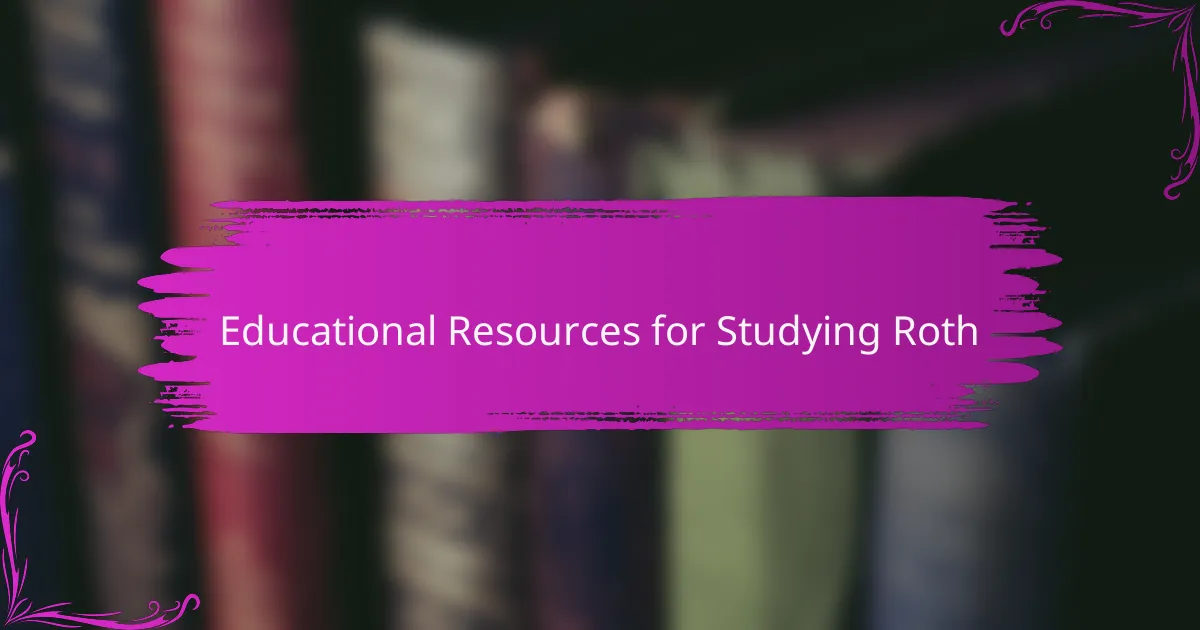
Educational Resources for Studying Roth
When diving into Philip Roth’s literature, it’s crucial to have the right educational resources that can enhance our understanding. I often find that scholarly articles can provide invaluable insights into his themes and characters. For instance, I once came across a comprehensive analysis that broke down the influence of Jewish identity in his works, and it genuinely opened my eyes to the depth of his characters’ experiences. Have you ever stumbled upon a piece that completely reshaped your perspective on an author?
Additionally, various online platforms and discussion forums can facilitate engaging conversations about Roth’s themes. I remember joining a book club focused solely on his works; the shared insights and personal interpretations enriched not just my understanding but also my appreciation for his complex narratives. It makes me wonder how collaborative learning can deepen our connection to literature.
Don’t overlook reading guides and study questions, either. They serve as excellent resources for unpacking Roth’s intricate plots and developing critical thinking. I found that answering guided questions helped me reflect more deeply on themes like mortality and identity, making the reading experience feel more personal and profound. Have you ever used study aids that transformed a book into a journey of self-discovery? It’s a remarkable process that can offer significant rewards.
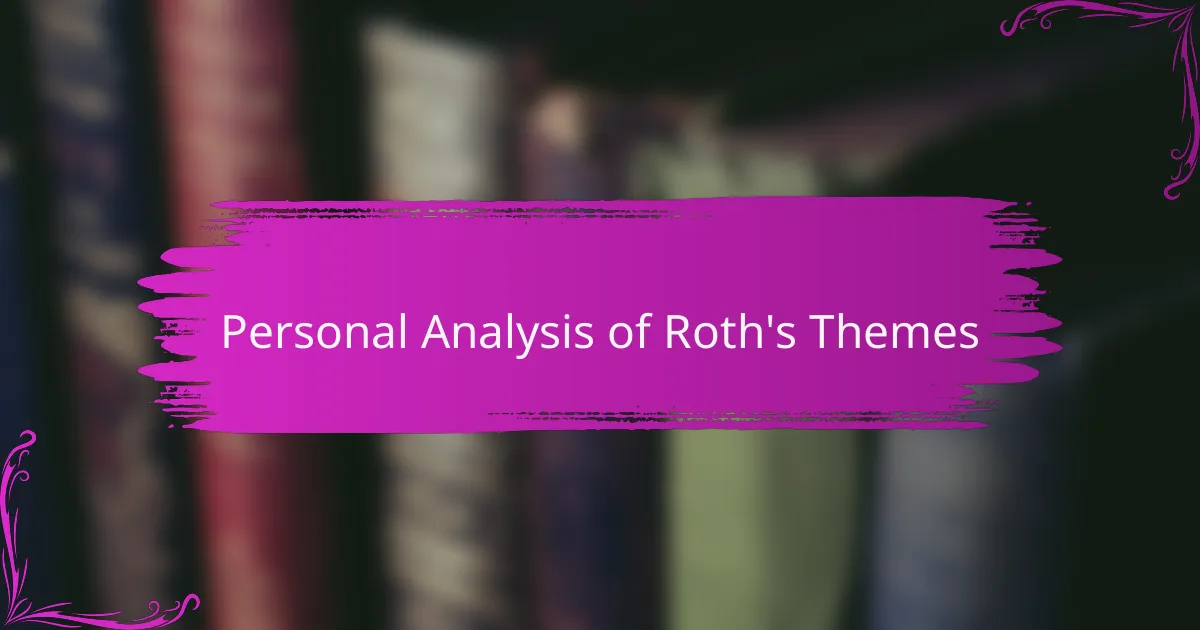
Personal Analysis of Roth’s Themes
In my analysis of Philip Roth’s themes, I find a deep exploration of identity and self-perception. Roth frequently grapples with the complexities of being an American Jew, which resonates with my own experiences of cultural identity. His characters often confront societal expectations, and I appreciate how he captures the tension between personal desires and external pressures, a struggle I think many can relate to.
Additionally, Roth’s exploration of mortality and the human condition hits home for me. In my own life, I’ve encountered moments that challenge my understanding of existence, echoing the themes Roth presents. His candidness about age and decline makes his work not only relatable but profoundly moving.
Here’s a comparison of some key themes in Roth’s work:
| Theme | Description |
|---|---|
| Identity | Exploration of self, cultural heritage, and societal pressures. |
| Mortality | Confrontation with aging, death, and the human experience. |
| Desire | The conflicts between personal desires and moral or societal constraints. |
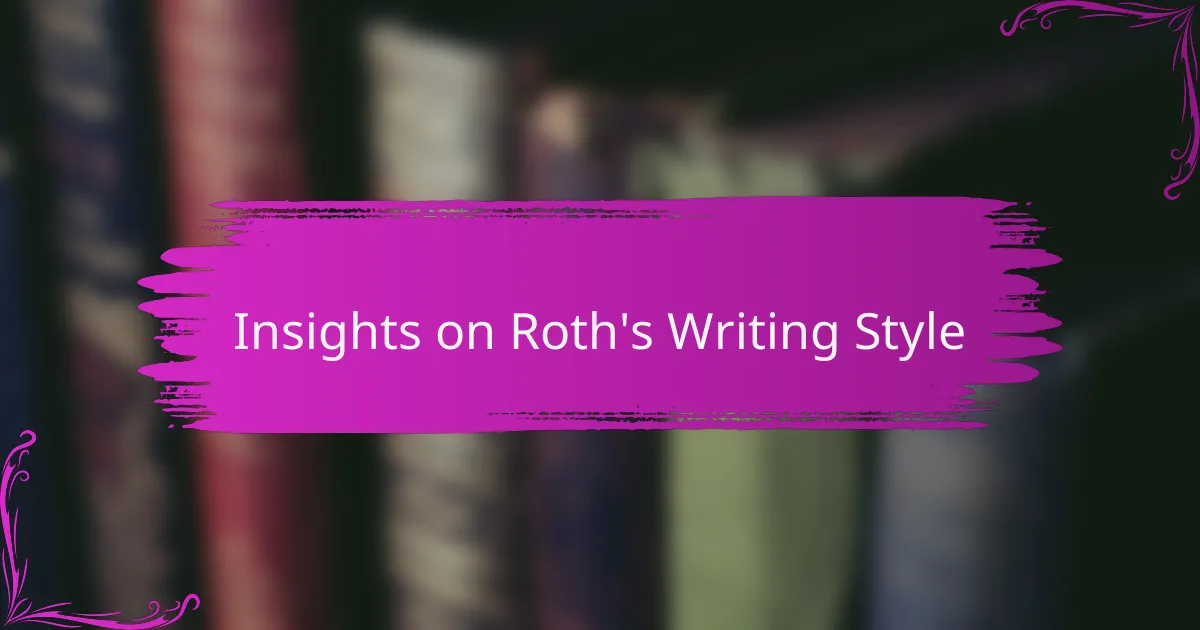
Insights on Roth’s Writing Style
Roth’s writing style is a masterclass in blending the personal with the universal. His use of semi-autobiographical elements makes his characters resonate deeply with readers. I remember reading “Portnoy’s Complaint” and feeling an intimate connection with Roth’s exploration of identity and guilt—emotions I’ve grappled with myself.
What stands out for me is his sharp, witty prose. Roth often employs humor to tackle serious themes, which creates a unique reading experience. I can’t help but appreciate how he effortlessly shifts from light-hearted moments to profound dilemmas, reflecting the complexities of life.
Here’s a comparison of some key elements of Roth’s writing style:
| Feature | Description |
|---|---|
| Autobiographical Elements | Roth’s works often reflect his own life experiences, making them relatable. |
| Humor | His use of humor balances the darker themes, providing a nuanced perspective. |
| Character Depth | Roth’s characters are multi-dimensional, exploring their flaws and desires in depth. |
